Background
- Companies with Global operations can generate more returns if their supply chains are flexible.
- This means that the supply chain should not be restricted to a specific country or region.
Specifically, the paper provides a clear argument on whether a company should establish an additional manufacturing facility in some other state or country, or whether the company should come up with a new distribution center location in another state or country.
Discussions on location decisions are based on company’s potential of ascertaining the difference between coordination and configuration. Coordination focuses on linking or integrating both the distribution and production facilities. The overall aim of this technique is to enable the firm realize its strategic objectives. On the other hand, configuration aims at providing a clear picture regarding the region or country where the facility should be located.
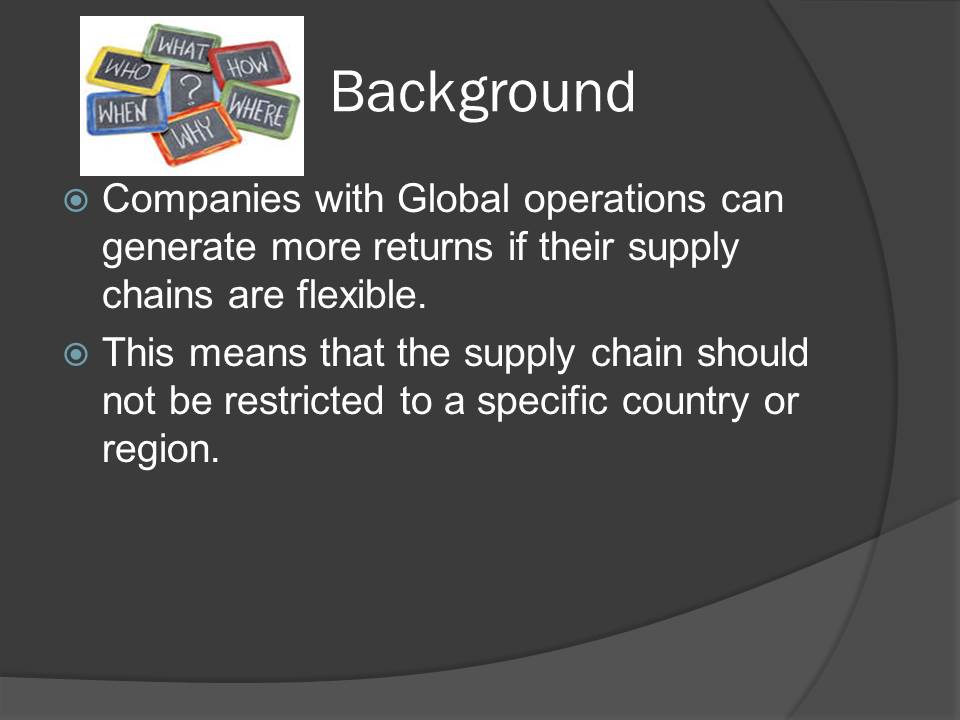
Significance of location
- The distribution chain should be framed in a manner that it ensures availability of company’s products or services.
- Location sensitive issues should be considered in all the countries where the company operates (Vos and Meijboom 790).
- The main focus of this paper is to provide suggestions that a given company can rely on when making location decisions.
Making location decisions may be hindered by a number of factors like logistical problems that are witnessed both at the operational and tactical level (Vos and Meijboom 790).
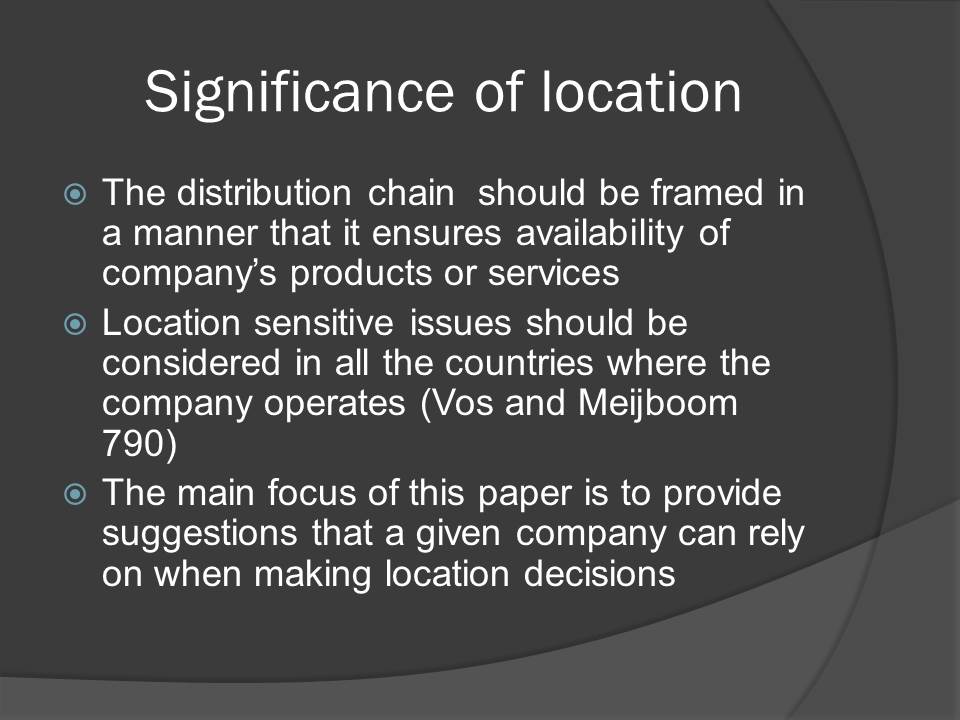
The decision making process
- The success of global operations of a company depends on the ability of the company to make good decisions.
- The company should make location decisions while considering market pressures like proximity, cost of location and the competitive advantage.
There are a number of steps or factors that the company should consider before making a decision of establishing a new distribution centre location in another country. These include; trade-offs, profit maximization and community growth. It is also imperative to mention that government policies may also be instrumental when assessing location factors that affect the establishment of a business entity or facility. As already hinted out in the previous section, there might be other pressures in the local market that may equally jeopardize the well being of a business organization. For instance, demand and supply of specific products or services may be affected by the local factors that prevail within a market.

Trade-offs
- Location analysts assert that a company should be able to understand trade-off issues when identifying locations where a company can maximize profits.
- Apart from other factors like energy and wages, trade-offs is a key factor to consider when establishing a new distribution point.
The increased savings implies that the business can be able to cater for transportation costs. However, the business should consider establishing the new center in a country or region where the demand is anticipated to increase (Blair and Premus 73). For this case, the company should make a decision of establishing the new distribution centre in the western part of the United States where the rate of growth in sales is expected to double. Alternatively, the company can establish another distribution center in other countries like India, China, or Mexico, where on average, population growth is averaging 10% into the future. At times, the company’s savings may not manage to cater for the transportation cost.
- For instance, if the company currently enjoys increased savings due to low wages, then it is good for the business to make a decision of establishing a new center.
Under such circumstances, the decision to remain in the current place of operation would be a great decision for the company. For the case of the company under analysis, it should choose the decision of relying on its current 50 stores that are located in the United States. However, there should be future pans of expanding in other areas since the current distribution points are located in countries with a lower rate of population growth. A high population growth is likely to increase the overall demand of goods or services of a given company hence improving the company’s performance.
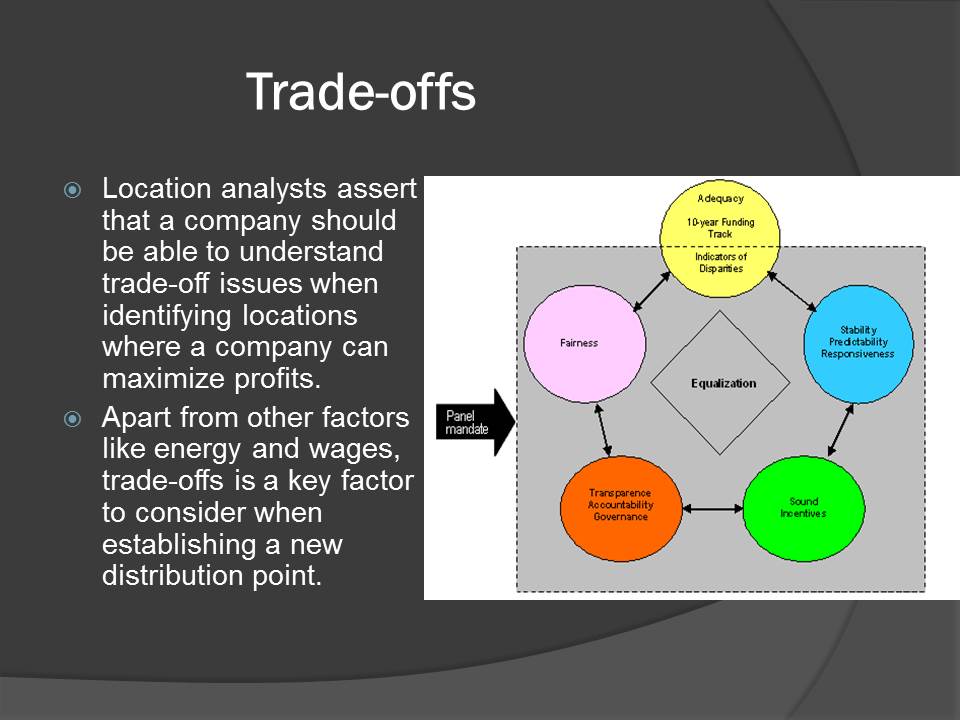
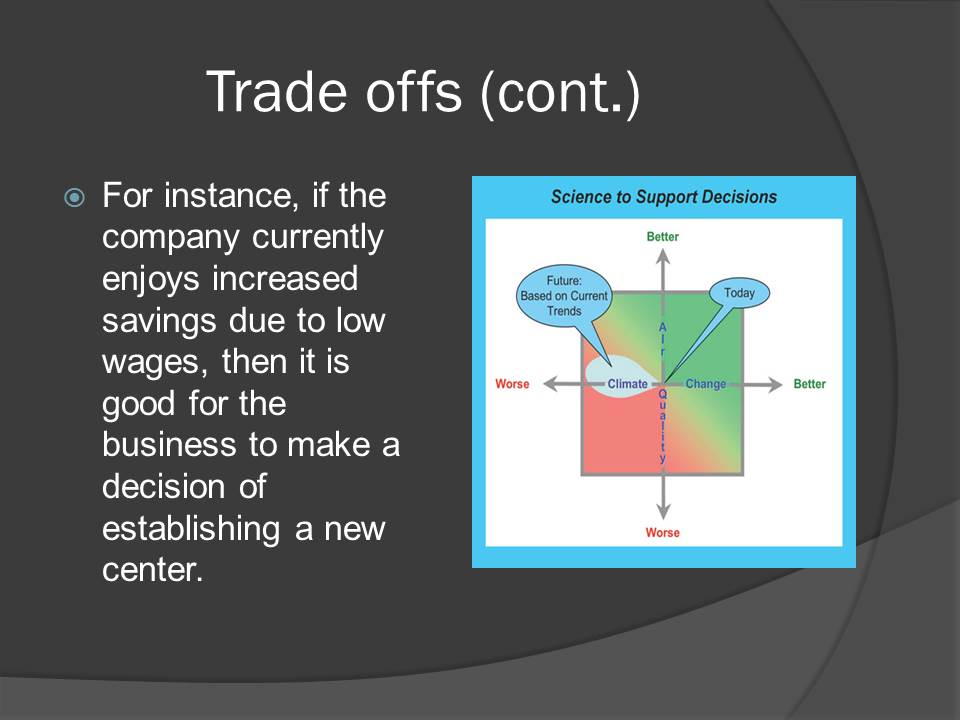
Profit maximization
- A company should also be able to understand the cost factors when identifying locations where a company can maximize profits (Needham and Robert 621).
- Initially, location of a company in other countries was regarded as a long-term decision in investment.
- If the firm decides to locate or establish in other distribution points, the new location should be able to offer the company a higher net value in its output compared to the output enjoyed by the company in its current location.
However, it is important to understand that the assumption of private maximization is not a key factor when making decisions on whether to establish a new distribution point or to locate to other regions. Most of the firm managers prefer to locate to places where security is guaranteed and where the company can realize satisfactory profits. There is no point of locating to locations where the company faces higher risks in terms of security even if the returns are significantly high (Longenecker 190). Personal preference is another factor considered when making location decisions. In many cases, new businesses do not put a lot of emphasis on maximizing profits when making location decisions.
- Many of them prefer to relocate to regions where the stakeholders live.
- This implies that individual factors are much considered when making location decisions (Blair and Premus 73).
Basing on the above facts, the company’s CEO should be advised on the need to locate or establish other distribution points in other regions if only the net returns in such regions are higher than the returns generated in the current location. In addition, matters concerning security should also be given first priority when making these decisions. If it is observed that there is no adequate security in countries like in India, China, or Mexico, then the CEO should be advised to stick to the current distribution points found in the United States and Europe.
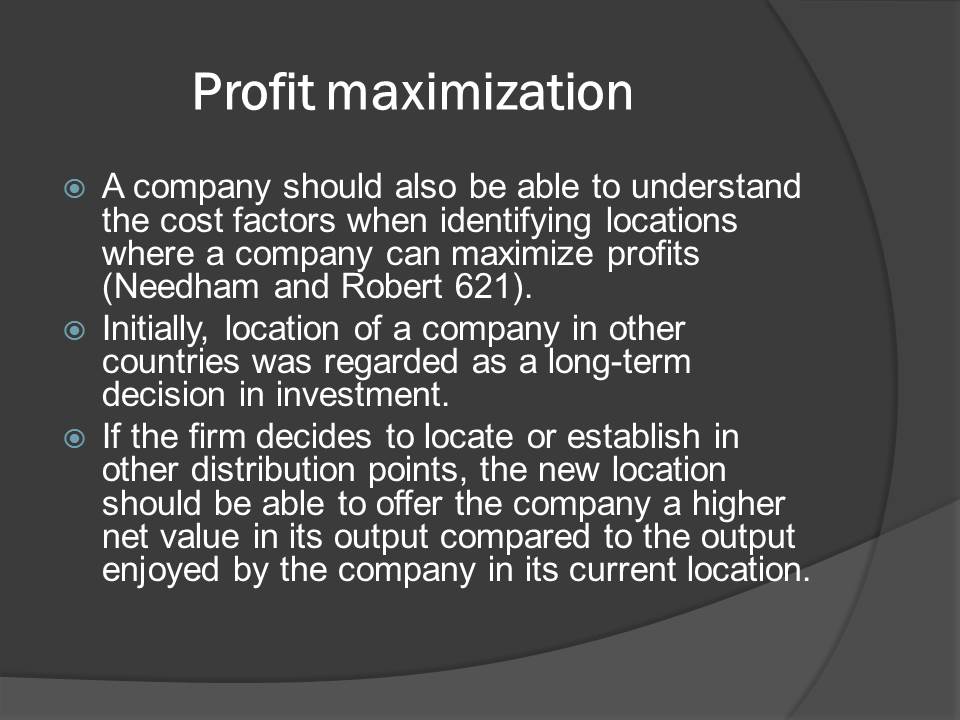

Decision to establish an additional manufacturing facility
- Apart from establishing new distribution centers in other countries, some companies prefer to establish an additional manufacturing facility in other regions or countries.
- Just like establishing new distribution points, there are a number of steps or factors that a company should consider before making a decision of establishing an additional manufacturing facility in another country.
- These include ownership-specific benefits, internalization benefits and location-specific benefits (Vos and Meijboom 792).
Ownership-specific benefits
Ownership-specific benefits refer to the intangible assets of the company that provide competitive advantage. Examples of these assets include marketing systems and the specific properties used by the company in production management (Peng 158). If the current manufacturing facility in the United States has such assets, then there is no need of establishing other facilities in other countries where these assets are lacking. The company can improve on its performance by putting greater focus on its current manufacturing facility. On the other hand, if the company expects to acquire similar assets in other countries like Mexico and China, then the company can go ahead and establish a similar facility in those countries (Vos and Meijboom 792).
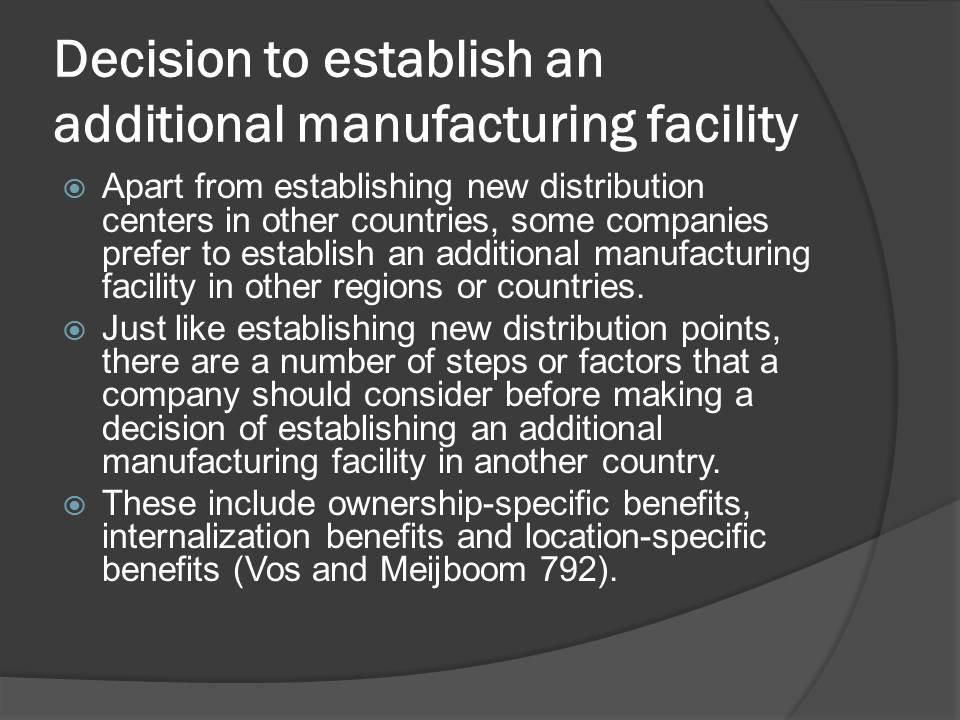
Internalization benefits
- Internalization benefits results from the company’s ability to create additional value-added chains.
- Such benefits are enjoyed by companies that have the potential of controlling supplies or market outlets (Vos and Meijboom 792).
- In this case, the company is likely to enjoy such benefits in its current location.
- From the fact that the company has a total of 50 distribution points in the United States, then there is a possibility that it can manage to control both the supplies and markets in the current location.
Location-specific benefits
The location-specific benefits refer to the attractive inputs of a company. These inputs can be in terms of productivity, price or quality. Reduced transportation cost is also included in this category. If the total cost of establishing additional facility in other countries is expected to be lower, then a decision to establish a new facility can work well for the company (Vos and Meijboom 793).
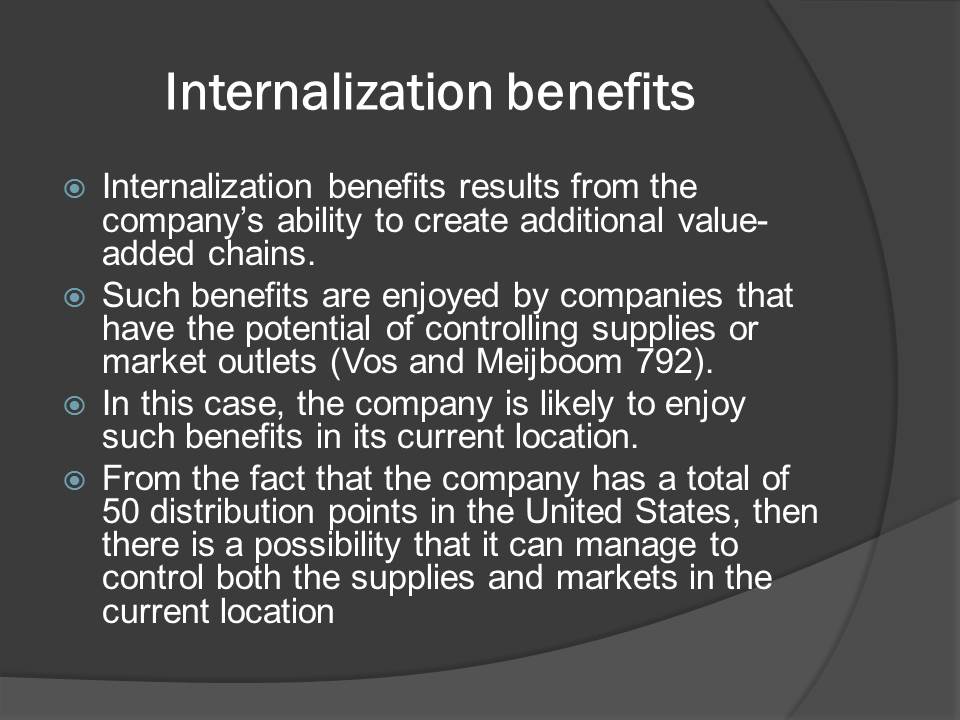
Conclusion
The decision to establish new distribution centers or to establish an additional facility depends on a number of factors.
For instance, before choosing to establish new distribution points in other countries, managers should be aware of issues like trade-offs and profit maximization.
Similarly, the company should also take note of the current benefits enjoyed by the company before deciding to establish additional facilities in other countries.
If the company finds it very useful to establish an additional facility, then it should focus in establishing the new facility in China, India or Mexico.
This is because the company does not have any distribution centers in these countries. In addition, the population growth rate in these countries is expected to grow at a higher percentage compared to other countries where the company has already established. However, the company should also take note of transportation cost before making the final decision. Since the company deals in “high-cube” products, transportation cost is likely to increase since the products require a cardboard packaging for protecting the high priced products.
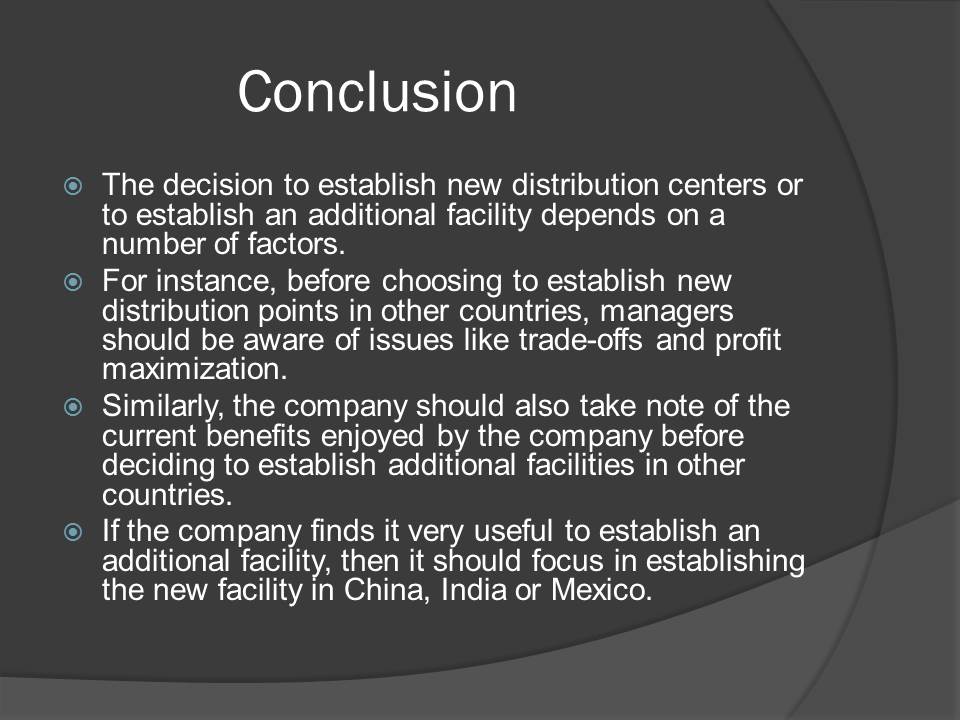
Works Cited
Blair, John and RobertPremus. Major Factors in Industrial Location. A review Economic development quarterly, 1(1987), 72-85. Print.
Longenecker, Justin. Small Business Management: An Entrepreneurial Emphasis. Mason, OH: Thomson/South-Western, 2006. Print.
Needham, David and Robert, Dransfield. Advanced Business. Oxford: Heinemann Educational, 2000. Print.
Peng, Mike. Global Business. Mason, OH: South-Western Cengage Learning, 2009. Print.
Vos, Bart and Bert, Meijboom. International Manufacturing and Location Decisions: Balancing configuration and co-ordination aspects. International Journal of Operations & Production Management 17 (1997), 790-805. Print.